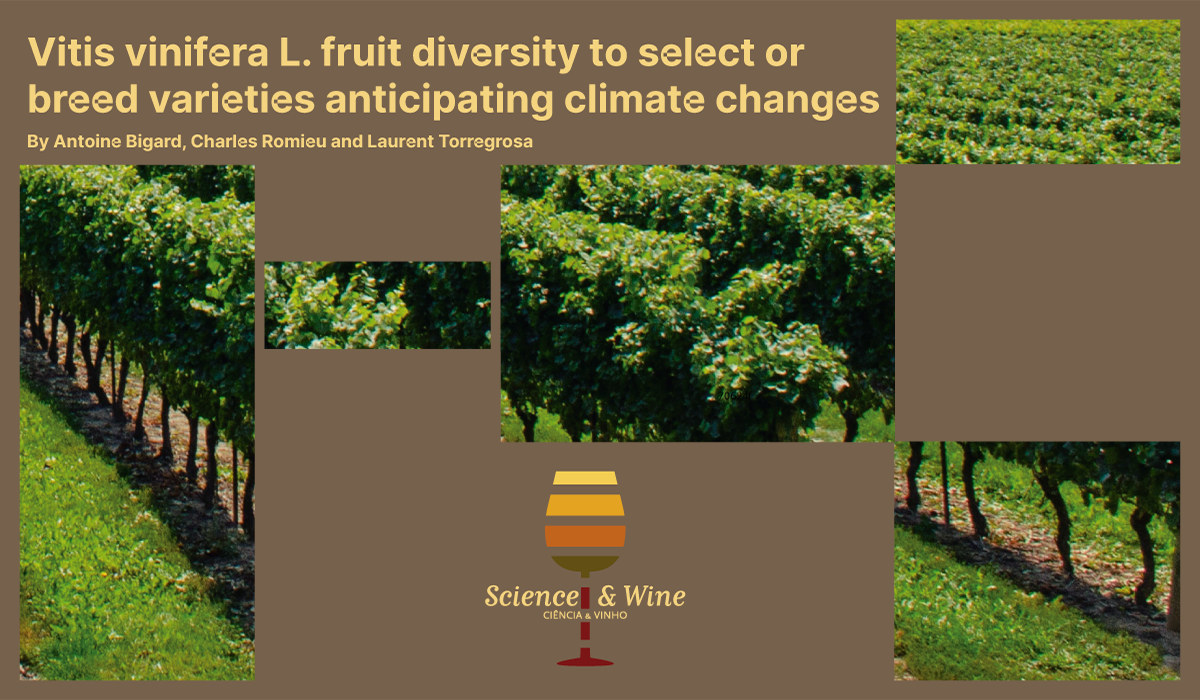By Antoine Bigard, Charles Romieu and Laurent Torregrosa
The wine industry is facing critical issues due to climate changes since production is established on very tight Genotype X Environment interaction bases. While, some cultivation practices can mitigate some adverse effects of abiotic stresses on the vines, e.g. the use of irrigation to mitigate drought, the deleterious impacts of warming on fruit development are difficult to manage . Elevated temperature alters grapevine fruit growth and composition, with a critical increase of the sugars/organic acids ratio. Using grapes with improved metabolic balances to offset high temperature effects would be a valuable option to sustain viticulture. Therefore, the use of genetic diversity and breeding appear as smart options for selecting genotypes better adapted to global warming. However, modern viticulture only uses a limited fraction of the potential diversity in V. vinifera and, the lack of knowledge about the diversity for fruit traits impacted by temperature impairs the design of breeding programs.
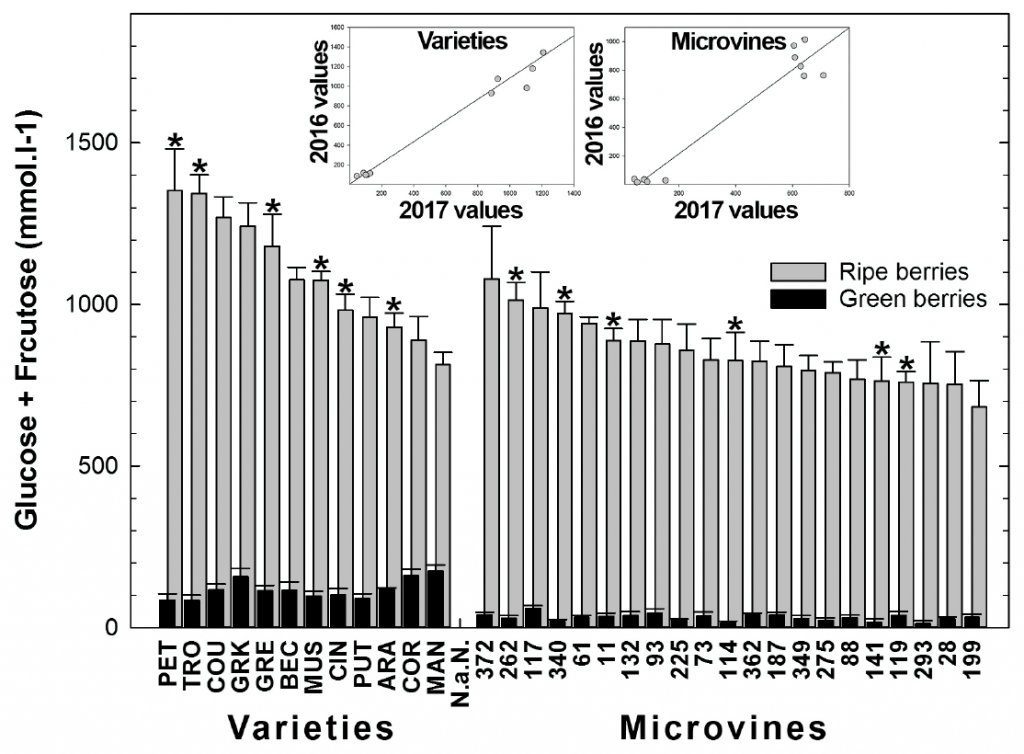
Several studies described the diversity for fruit size, primary and secondary metabolites in V. vinifera or in segregating progenies. However, there are some difficulties to unambiguously define physiological developmental stages in grapevine population of berries, a limiting factor for genotypic comparisons. Here, berry phenotyping was performed at two precise physiological stages of grapevine fruit development, i.e. the onset of berry ripening and the maximum berry volume. First stage corresponds to end of green lag phase when organic acidity reaches its maximum just before berry softening. The second stage correspond physiological ripe stage, when phloem unloading through the apoplasmic pathway stops, soluble solids and water reach a maximum content per berry, just before shrivelling.
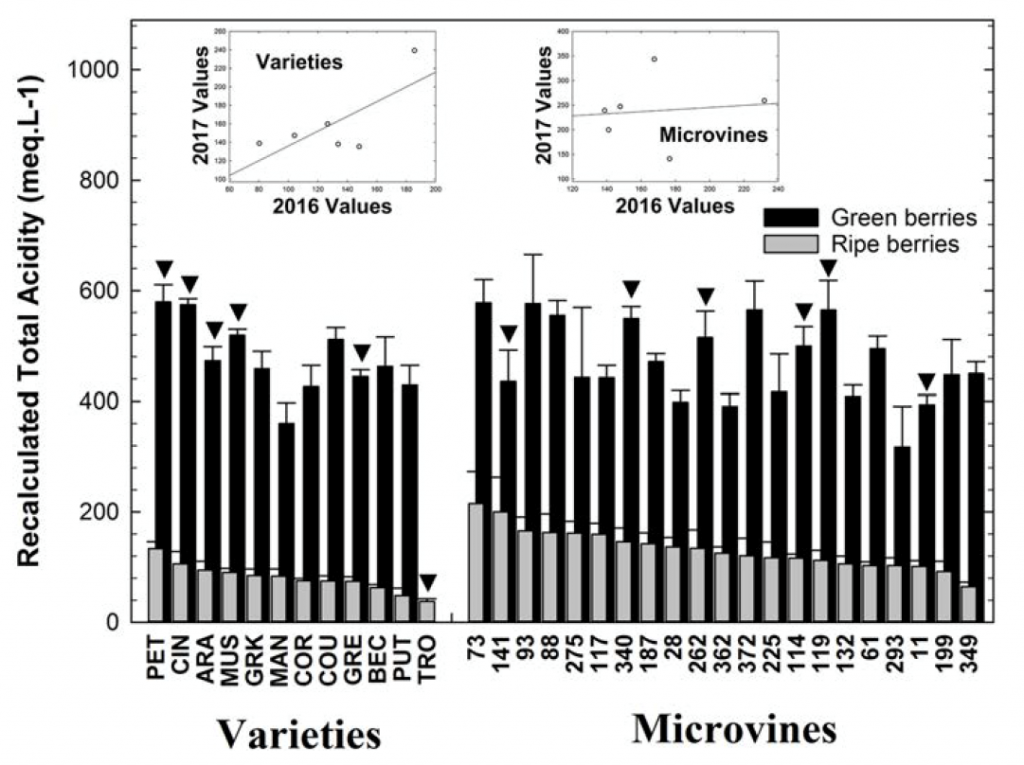
We studied a panel of 33 genotypes, including 12 grapevine varieties and 21 microvine offsprings. Results revealed large phenotypic variations at both stages for berry size, as well as for primary metabolites (malic and tartaric acids, sugars) and major cations (potassium, calcium, magnesium and ammonium). At ripe stage, fruit fresh weight ranged from 1.04 to 5.25 g and sugar concentration from 751 to 1353 mmol.L-1. The content in organic acids varied both in quantity (from 80 to 361 meq.L-1) and in composition, with malic to tartaric acid ratio ranging from 0.13 to 3.62. At inter-genotypic level, data showed no link between berry growth and osmoticum accumulation per fruit unit, suggesting that berry water uptake is not only dependent on fruit osmotic potential. In the ripe grape, K+ concentration varied from 28 to 57 mmol.L-1 with other cations being less concentrated. Combined with the variation in organic acids, cation concentration diversity resulted in titratable acidities in the physiologically ripe fruits ranging from 38 to 215 meq.L-1. These results open new perspectives for the selection of varieties to mitigate the adverse effects of climate warming on wine grape quality.
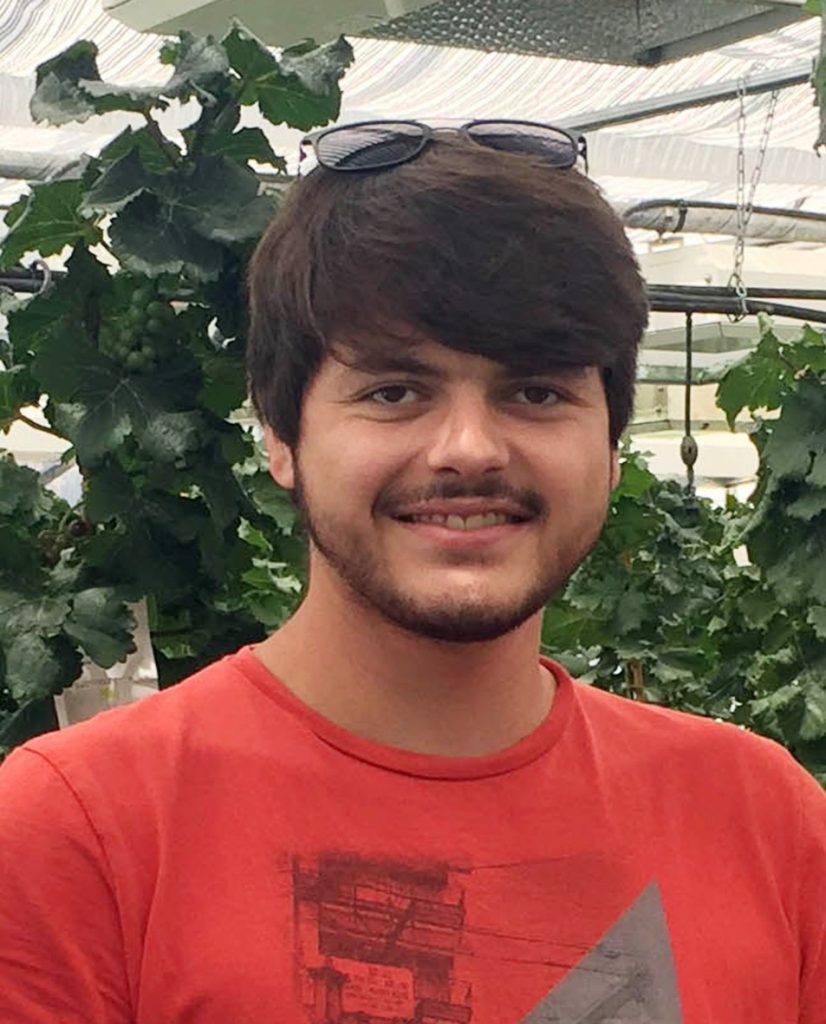
Antoine Bigard 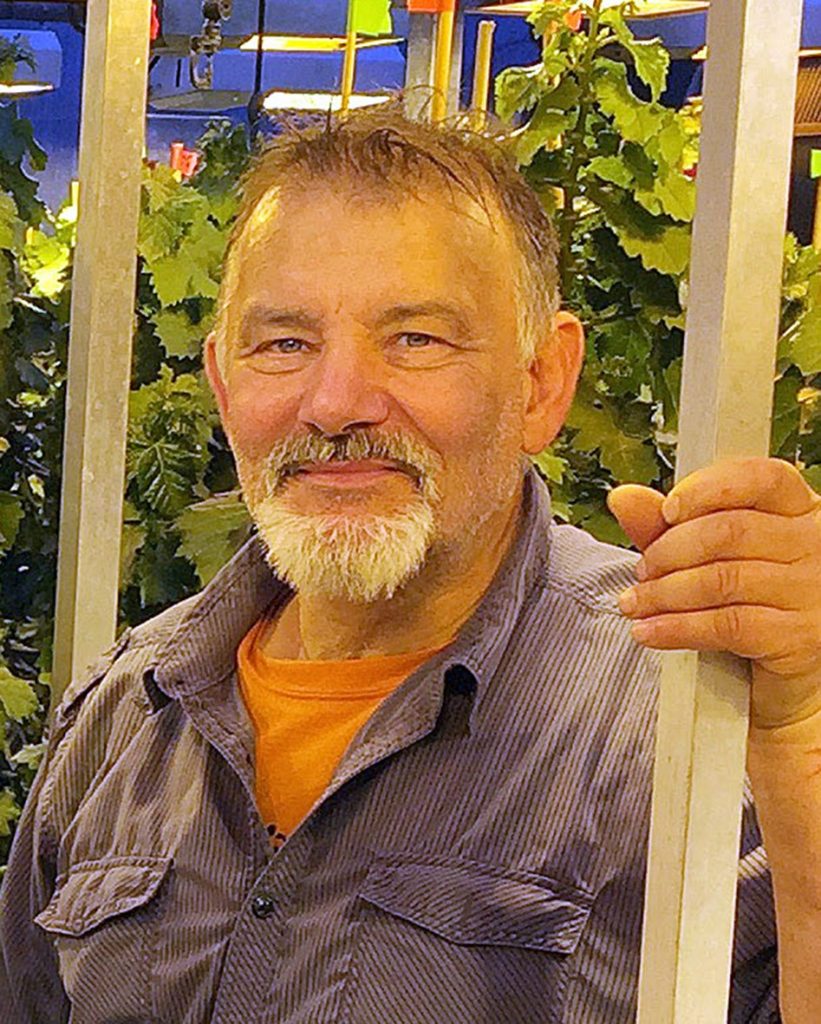
Charles Romieu 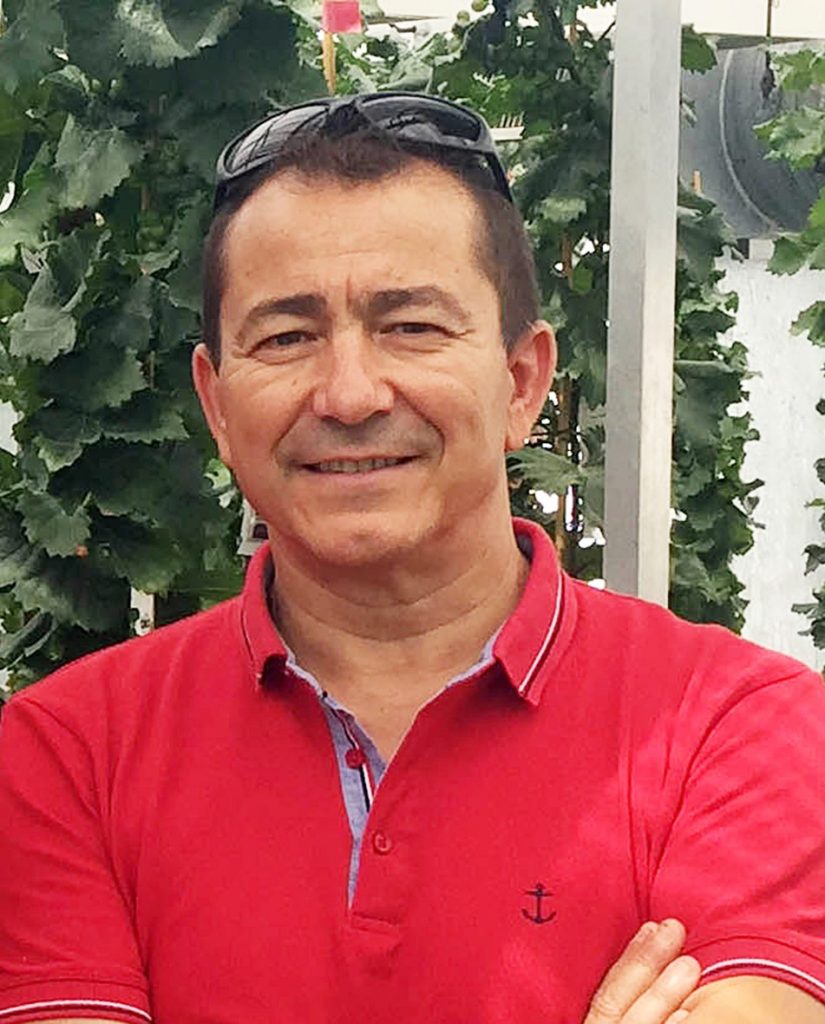
Laurent Trregrosa
Antoine Bigard – Antoine Bigard was PhD student from 2015 to 2018 at the Intitute Agro of Montpellier and the Occitanie INRAe center of Montpellier. Reseraches were performed in two units: UMR AGAP (University of Montpellier, CIRAD, INRAe, Institut Agro of Montpellier) and the INRAe Experimental centre of Pech Rouge. Antoine Bigard scholarship and research funding was provided by the CIVB (Comité Interprofessionnel des Vins de Bordeaux), the Jean Poupelain foundation, the government of Occitanie, INRAe and the Institut Agro de Montpellier.
Charles Romieu – Charles Romieu is principal investigator in fruit physiology at INRAe (French National Institute for Agriculture, Food, and Environment), center of Occitanie-Montpellier (France). After having introduced energetics and membrane transports in research on grape berry physiology in the mid-eighties, he coordinated the French transcriptomic initiative announcing the launching of the grape genome project. He is now interested in the response of berry quality to environmental factors and its genetic diversity. The major methods and techniques used are the phenotyping of different genetic ressources including microvines progenies and transcriptome analysis through RNAseq. Since 2011, he has been studying the impact of elevated T° and water deficit on grapevine vegetative and reproductive developments. As the co-animator of genovigne 3, he is now targeting the pre-breeding of cultivars more resilient to heat and drought stress, anticipating the consequences of climate change on berry quality. https://www.researchgate.net/profile/Charles_Romieu2
Laurent Torregrosa – Laurent Torregrosa is professor of plant biology & genetics at Institute Agro of Montpellier (National Institute of Higher Education for Agriculture, Food and the Environment). During his first position, as a research fellow, L. Torregrosa dealt with the genetic engineering of the grapevine resistance to grapevine chrome mosaic virus & powdery mildew. From 2000 to 2010, L. Torregrosa was involved in several programs to study the genetic regulation of grapevine reproductive development. Since 2011, he has been studying the impact of elevated T° and water deficit on grapevine vegetative and reproductive developments in order to identify traits of adaptation to heat and drought. Board of the International Grape Genome Program (IGGP) and the International Viticulture & Enology Society (IVES), member of the French delegation at OIV, president of the GiESCO (www.giesco.org). https://www.researchgate.net/profile/Laurent_Torregrosa

